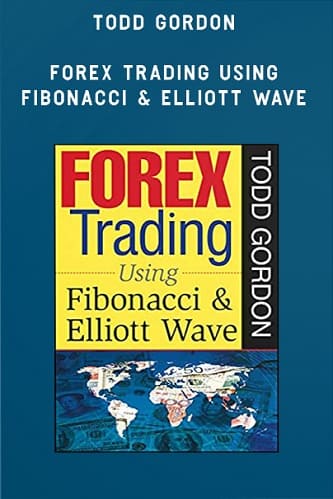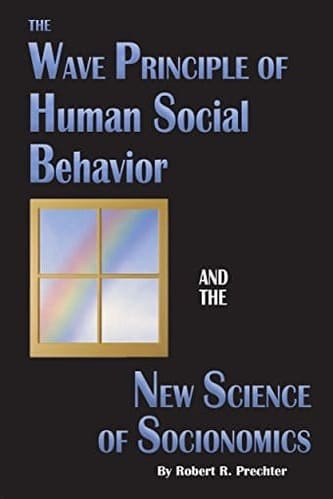Articles
Trend Tracking With Elliott Wave By Ryan Henry
Can you use Elliott wave theory to investment success? The Elliott wave theory might be the most misunderstood stock market investing theory out there, even within technical analysis circles. It’s easy to understand the skepticism. On one hand, many prominent Elliott wave analysts have made a name for themselves by being the most outspoken bears on the street. It’s hard to comprehend how any theory could have much value if it is always calling for a devastating market decline and the end of life as we know it. The market will go down at times, but that’s just a fact of life; from a long-term perspective, though, the markets move higher most of the time.
On the other hand, there’s the impression that the theory is vague and allows too much discretion to be of any use. With other technical analysis methods, a sell signal is a sell signal. If an uptrend has been moving within a channel and the channel is broken, that is a bearish sign. If a technical indicator like the moving average convergence/divergence (MACD) creates a negative divergence and then crosses into negative territory, that’s a bearish sign. If the daily candlestick is a shooting star, that’s a bearish sign. What, then, about the Elliott wave?
ELLIOTT WAVES
With the Elliott wave theory, the same black & white reasoning does not apply. These are understandable arguments; however, using them as an excuse to omit Elliott waves from your investment toolbox is a costly mistake. When used correctly, the Elliott wave theory is one of the most valuable forecasting methods available. That’s because it may be the only theory that has the power to forecast every aspect of a market trend, from internal pauses within a trend to specific targets for the entire trend. Not only that, it is capable of identifying the exact point that a forecast is wrong, allowing you and your investments to jump on the right track as long as you’re committed to being objective.
But talk is cheap. If you want the kind of investment power that only Elliott waves can provide, read on as we go through the basics of Elliott and the anatomy of a successful forecast using the Elliott wave theory.
To understand the forecasting power of the Elliott wave theory, you must first understand the basics. The Elliott wave theory is based on the fact that all price movement on a chart falls into one of two classifications. The first is trending or impulsive movement, which is the type of price action that occurs in the direction of the dominant trend. Trending price movement takes on a very identifiable form. Specifically, trending patterns are purposeful and are composed of five phases, or waves.
The second type of price movement is corrective, or countertrend movement. As you might guess, this is the type of price action that occurs against the dominant trend. Like the trending movement, the corrective movement takes on a specific form. It is normally composed of three phases or waves and lacks the type of purpose that is possessed by a trending move.
Every last piece of action on any price chart can be categorized as impulsive or corrective. If we can identify which type a given price move possesses, we can determine the true underlying trend. This is information that can make or break your investment success. Let’s look at a real-world example of how this classification of price can identify the true market trend.
HERE’S AN EXAMPLE
FIGURE 1: START OF A NEW DOWNTREND? The S&P 500 made it clear early on that the October 2007 high was important.
In late 2007, in the winter months of an enormous four-year bull market, it was hard to find a seller. The Dow Jones Industrial Average (DJIA) and the Standard & Poor’s 500 were at all-time highs, and there was no good indication that the market was peering over a cliff. In October of that year (Figure 1), a down leg emerged that looked a lot like a down leg that had occurred just two months prior. The earlier down leg did not break the uptrend, so it seemed reasonable this one would have a similar outcome.
FIGURE 2: THE THREE-WAVE RECOVERY. The small recovery in November 2007 left no doubt — a larger decline had begun.
However, if you were using the right tools, you would have known that October’s down leg was dramatically different. The down leg of August had been a corrective three-wave move. This indicated it was a countertrend move and the uptrend was still in play. In contrast, October’s down leg was a five-wave move.
This is the stuff that new trends are made of. This impulsive or five-phase down move put Elliotticians on guard to the possibility that an important high had been found. The price action that occurred next sealed the deal. After tracing out the five-wave decline, the market responded with a three-wave recovery (Figure 2).
FIGURE 3: MARKET FALLOUT. As soon as trending price movement occurred to the downside, the market fell apart.
Three-wave recoveries are corrective, countertrend moves. So even though price was still right below all-time highs, there were some significant changes in price’s behavior. Previously, all upside action was trending movement. Suddenly, upside action had become corrective, and in the world of the Elliott wave, that meant a much more significant decline was at hand. The corrective recovery gave way to a true market cliff dive. Once again, the decline was impulsive, taking on a five-wave form (Figure 3).
FIGURE 4: AN EVEN LARGER MOVE. A larger trending pattern forms off the October 2007 high.
Suggested Books and Courses About Elliott Wave Analysis
Forex Trading Using Fibonacci and Elliott Wave By Todd Gordon
Original price was: $60.00.$24.49Current price is: $24.49.Elliott Wave DNA Trading By Nicola Delic
Original price was: $997.00.$61.09Current price is: $61.09.By itself, this was an incredible forecast on the part of the Elliott wave theory. But the fun was just beginning. On a larger time frame, a bigger trending or five-wave pattern took shape. The decline off the October 2007 highs became an even larger five-wave move (Figure 4).
FIGURE 5: A CONFIRMATION OF THE MARKET’S INTENTIONS. The corrective recovery of the markets during spring 2008 was an indication that a much bigger downtrend was in the works. This provides a shorting opportunity.
Suddenly, despite the already gigantic size of the decline, it became clear that a much bigger downtrend was in the works. When the spring of 2008 was spent in a corrective three-wave recovery (Figure 5), it further solidified the market’s intentions. Talk about a shorting opportunity! What followed this textbook setup was one of the biggest and sharpest declines investors have ever seen (Figure 6).
FIGURE 6: A BIG, SHARP DECLINE. The bearish Elliott wave setup led to an enormous decline.
Not only did the Elliott wave theory indicate that a major decline was coming, it confirmed that lower and lower prices were in order by tracing out trending downside movement every step of the way (Figure 7).
FIGURE 7: FOLLOWING THE WAVES. The enormous 2007–09 bear market was textbook Elliott wave theory all the way.
TRACKING TRENDS
By objectively applying the Elliott wave theory, investors can identify market trends long before they pick up steam. The 2007–09 bear market is only one example. Take a look at the price action that occurred off the March 2009 low. If you can determine that the trending movement ceased to the downside and began occurring to the upside, then you too are capable of using Elliott wave theory to identify important changes in market direction.
Ryan Henry is the author and lead analyst at www.wavespeak.com, an investment analysis firm that boasts an enviable eight-year track record. Wavespeak provides market index forecasting and stock trade recommendations through a newsletter that is published three times a week. Wavespeak’s analysis is driven by the Elliott wave theory, but includes consideration for Fibonacci mathematics, intermarket relationships, breadth, volume, and money flow analysis.




